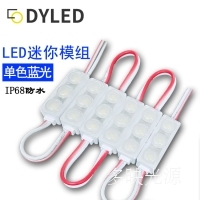【摘要】提升注塑技术,英文用语解析IntroductionIn the field of manufacturing, injection molding is a widely used process for the produc......

Introduction
In the field of manufacturing, injection molding is a widely used process for the production of plastic parts. It involves injecting molten plastic into a mold cavity to create the desired shape. The process is efficient, precise, and versatile, making it a popular choice for the production of a wide range of products. However, with the ever-increasing demand for high-quality products, there is a need to constantly improve the injection molding process. In this article, we will explore various strategies for enhancing injection molding technology.
Optimizing Mold Design
The design of the mold is a critical factor that affects the quality of the final product. A well-designed mold should ensure uniform filling, minimize the occurrence of defects, and reduce cycle time. One way to optimize mold design is to use computer-aided design (CAD) software. With CAD, designers can create 3D models of molds, simulate the injection molding process, and identify potential problems before production. This helps to reduce the time and cost involved in mold development.

Another way to optimize mold design is to use mold flow analysis software. This software simulates the flow of molten plastic in the mold cavity and predicts the occurrence of defects such as air traps, weld lines, and sink marks. By analyzing the simulation results, designers can modify the mold design to eliminate or minimize these defects. Mold flow analysis software can also optimize the gate location and size, runner system, and cooling system to improve the filling and cooling of the mold.
Improving Material Selection
The choice of material for injection molding is critical to the quality and performance of the final product. Different materials have different properties, such as stiffness, toughness, heat resistance, and chemical resistance. Selecting the right material for the application is crucial. For example, if the product will be exposed to high temperatures, a material with high heat resistance should be used.
Another factor to consider when selecting a material is its viscosity. The viscosity of the molten plastic affects the filling of the mold and the formation of defects. Materials with high viscosity require higher injection pressure and longer filling time, which can result in defects such as air traps and sink marks. Materials with low viscosity can flow more easily, but may not fill the mold completely or may result in flash.
Controlling Process Parameters
The injection molding process involves several parameters that affect the quality of the final product. These include injection pressure, injection speed, melt temperature, mold temperature, and holding pressure and time. Controlling these parameters is critical to achieving consistent and high-quality parts.
One way to control process parameters is to use a closed-loop control system. This system uses sensors to monitor the process parameters in real-time and adjusts them automatically to maintain the desired conditions. Closed-loop control systems can improve the repeatability and accuracy of the injection molding process.
Implementing Automation
Automation can improve the efficiency and consistency of the injection molding process. Automated systems can perform tasks such as material handling, mold set-up, and quality control. This reduces the time and cost involved in manual labor and improves the accuracy and reliability of the process.
One example of automation in injection molding is the use of robots for part handling. Robots can remove parts from the mold, inspect them for defects, and place them in a container or on a conveyor belt. This reduces the risk of damage to the parts and improves the speed and accuracy of part handling.
Ensuring Quality Control
Quality control is critical to the success of the injection molding process. Quality control measures should be in place to ensure that the final product meets the required specifications. This includes inspecting the parts for defects, measuring their dimensions, and testing their performance.
One way to ensure quality control is to use statistical process control (SPC). SPC involves monitoring the process parameters and part quality over time and identifying trends and patterns. This helps to identify potential problems before they occur and allows for corrective action to be taken.
Another way to ensure quality control is to use automated inspection systems. These systems use cameras and sensors to inspect the parts for defects and measure their dimensions. They can also perform functional tests to ensure that the parts meet the required performance specifications.
Conclusion
In conclusion, there are various strategies for enhancing injection molding technology. These include optimizing mold design, improving material selection, controlling process parameters, implementing automation, and ensuring quality control. By implementing these strategies, manufacturers can improve the quality, efficiency, and consistency of the injection molding process, and produce high-quality products that meet the demands of the market.
 logo
logo
